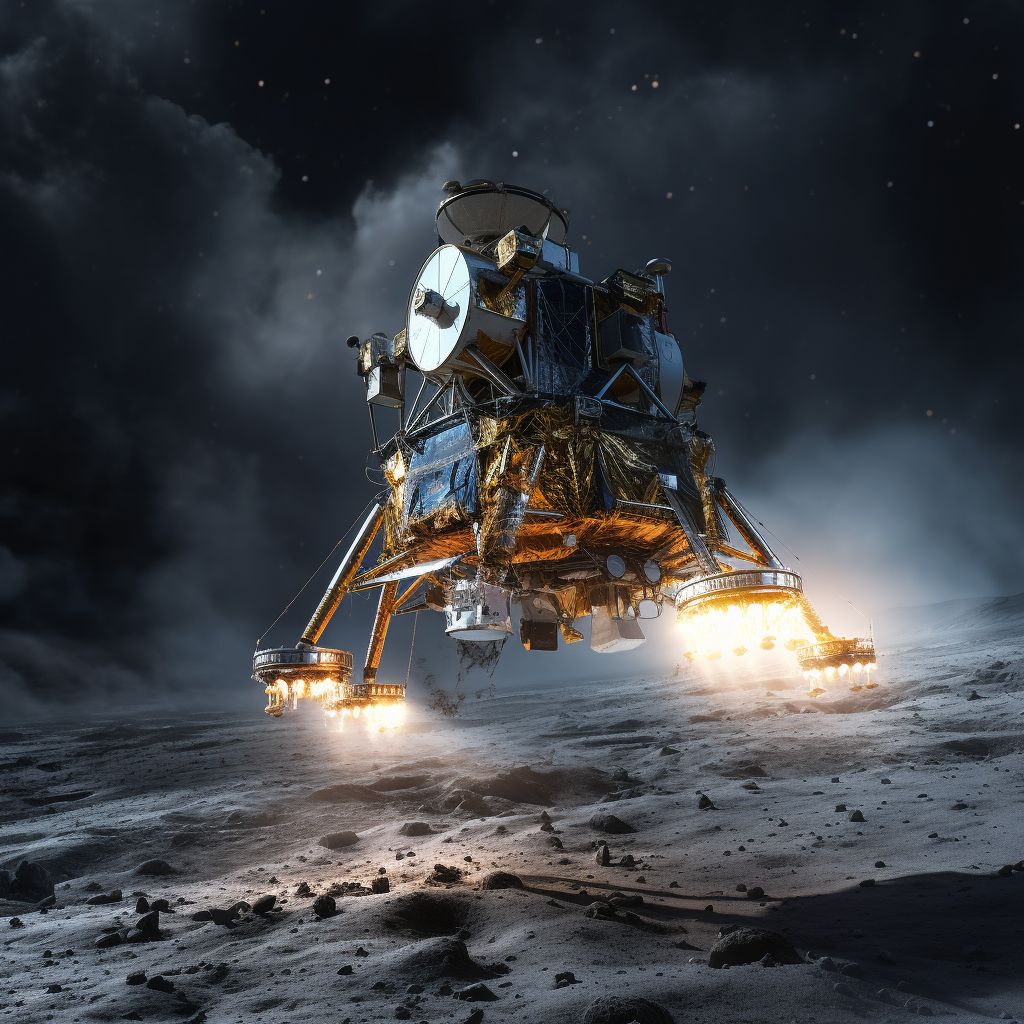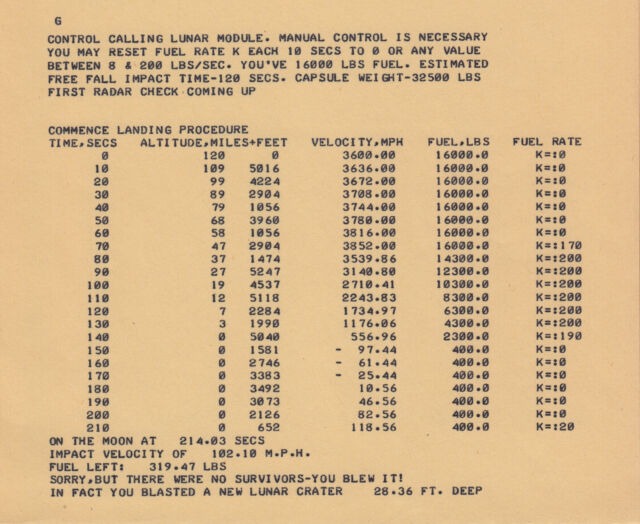Artificial intelligence expert, game developer and former MIT graduate student Martin Martin, who was enjoying a well-deserved retirement, discovered a bug in the code of the original Lunar Lander computer game. This game was developed by Jim Storer in 1969 on a PDP-8 minicomputer in the FOCAL language. Unlike modern games, Lunar Lander displayed gameplay only as text messages on a teletype. It was only in 1974 that a graphical interface was added to the game.

Lunar Lander is a simulation in which players must control the descent of a lunar module to the surface of the Moon, controlling the use of fuel for a soft landing. Players had to carefully monitor fuel usage to achieve a soft landing, making important decisions every ten seconds.
The retiree discovered a bug in Storer’s code while playing this old simulator, and was trying to find the best strategy for landing the module with maximum fuel efficiency. This method, known as “suicide”, involves free-falling to gain speed and igniting the engines at the last moment to land safely. Martin also tried a soft landing.

“I recently explored the optimal fuel burn schedule to land as gently as possible and with maximum remaining fuel. Surprisingly, the theoretical best strategy didn’t work. The game falsely thinks the lander doesn’t touch down on the surface when in fact it does,” Martin wrote on his blog.
Delving deeper into the game, Martin found a mistake that had gone unnoticed for nearly 55 years.
Martin found that the game inconsistently reported that the landing module missed the surface of the moon. He found that the landing algorithm was based on complex physics, including Tsiolkovsky equations and Taylor series expansion. The problem was the lack of division by two in the formula used to calculate the trajectory of the descent vehicle. This bug led to an underestimation of the time for the vehicle to reach the lowest point of the trajectory and an incorrect landing calculation.
Despite the bug, Martin was amazed that Storer, then a high school student, was able to incorporate advanced math concepts into his game – a feat that remains impressive even today. Martin contacted Storer and he told him that his father, who taught physics, had helped him derive the equations.
This case shows that realism is not always the most important part of a compelling interactive experience. Fortunately, the actual experience of the Apollo moon landing did not suffer from this problem.
We previously reported about things happening in the Oxygen Not Included game.
According to arstechnica.com


